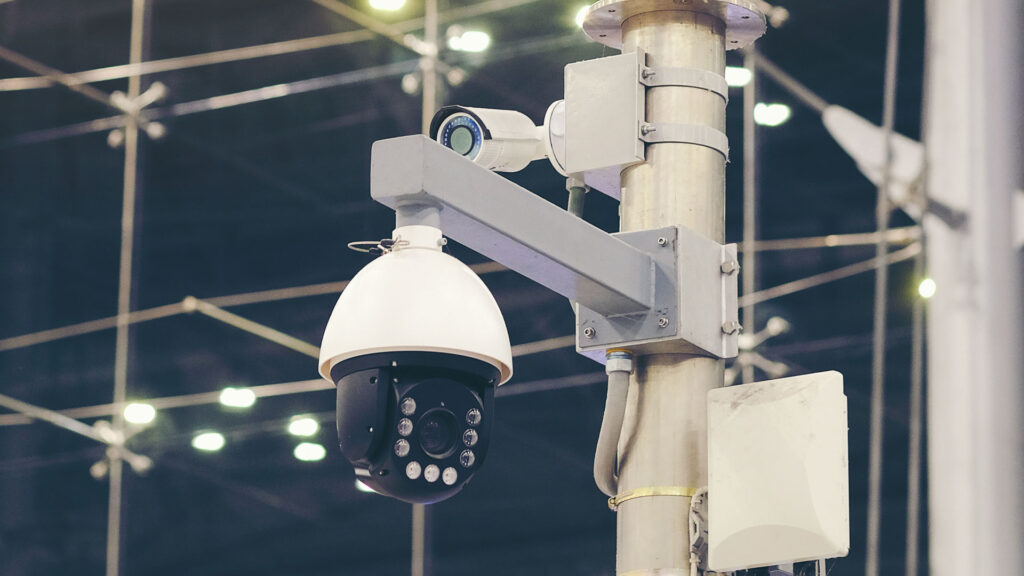The fallacy behind private surveillance cameras in San Francisco

Recently The New York Times published an article about a San Francisco tech executive named Chris Larsen and his efforts to fund a private network of surveillance cameras around the city.
Since 2012 Larsen has spent nearly $4 million of his own money installing more than 1,000 cameras blanketing 135 city blocks. Larsen’s partners in this effort are the city’s Community Benefit Districts with whom he works to install cameras on private property and control access to footage.
Why fund this multimillion-dollar network of surveillance cameras capable of picking out the dimples on a person’s face and tracking individuals over several blocks? Larsen claims his motivation is his frustration with San Francisco’s plague of property crime, specifically auto break-ins.
According to Larsen, the solution is “pure coverage”: specifically “full city camera coverage, so police can play a smaller, more subtle role. Individual vigilantism will not work, he argued, but strong neighborhoods with continuous video feeds on every corner will.”
Multiple research studies suggest that “pure coverage” of surveillance cameras does not end crime. Ironically, property crimes, specifically auto theft (of and from vehicles) is one type of crime that surveillance has been demonstrated to curtail, but – as a 2008 study of San Francisco’s police-controlled surveillance cameras showed – only in precisely targeted, contextually specific applications.
The notion that carpeting a city with cameras will prevent crime is a fiction, even if there are real-time and immediate consequences to being caught on camera. In short, without enabling a police state, ubiquitous cameras are not the answer.
And as to the “more subtle role” played by police that Larsen envisions, recent reporting by the Electronic Frontier Foundation reveals that to be a fiction as well. According to records obtained by the Electronic Frontier Foundation, San Francisco Police “conducted mass surveillance of protesters at the end of May and in early June using a downtown business district’s camera network.”
By circumventing the Big Brother of law enforcement, Larsen is enabling the creation of a network of Little Brothers that is presently unaccountable and disproportionate to the problem at hand, especially given that San Francisco police have concluded that the actual number of perpetrators of these crimes is quite small.
The myriad factors involved in crime make identifying a single variable responsible for its reduction extremely difficult. What is inarguable is that shifting responsibility for monitoring public spaces from law enforcement to citizens rarely addresses the disproportionate impacts of surveillance on marginalized communities.
As journalist Lauren Smiley eloquently explained in The Atlantic last year in her investigation of the response of some Potrero Hill residents to a local package thief, “while porch cams have been used to investigate cases as serious as homicides, the surveillance and neighborhood social networking typically make a particular type of crime especially visible: those lower-level ones happening out in public, committed by the poorest.”
Technologically enhanced private surveillance also enables a form of community vigilantism when individuals with no training, no oversight and no legal culpability are given the ability to surveil the public at will. We’ve already witnessed how neighborhoods armed with Ring cameras and similar technologies share footage widely online, often engaging in racial profiling, misidentification or generalized susupicion of “strangers,” often Black or brown, who are merely going about their lives.
Much of Larsen’s investment has been in the city’s wealthiest or gentrifying neighborhoods, which raises questions about how redistributing his $4 million investment might have chipped away at this problem from a different angle, especially considering that in San Francisco, an individual earning under $82,000 a year is considered low-income.
In this instance, Community Benefit Districts serve as a convenient vehicle for purportedly representing the views of neighborhoods. Who they speak for, however, and what purpose they serve, is open to debate. A 2018 UC Berkeley study of Community Benefit Districts in California found that they “use their power and resources to advocate for anti-homeless policies and to support policing practices that exclude or drive out homeless people.” The Berkeley study raises important questions as to whether Community Benefit Districts are the appropriate entity to wield the power of such sophisticated surveillance tools.
We don’t contest the seriousness and frustration of these crimes. But in a city that has some of the tightest restrictions on video surveillance and face recognition technology by its police, and prides itself on its respect for diversity and civil rights, there is no irony in witnessing private interests, particularly technology millionaires, that disrupt public checks and balances to create an unaccountable surveillance system.
